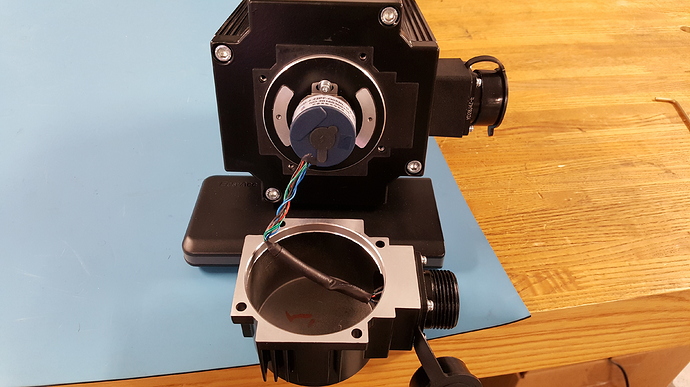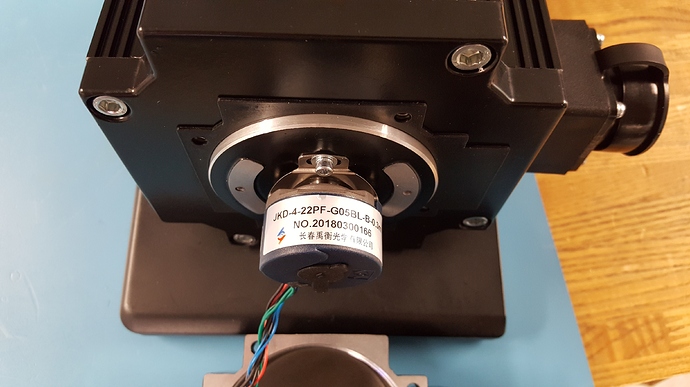So it’s a single-turn absolute 22 bit, Binary code, Clockwise counting, 5 volts, BISS, the smaller diameter of a holder, 0.3 meters. 62.5kHz update rate with 10 Mbit rate on <12 meter 24AWG UTP cable.
Inside it is using sin-cos encoder + digital converter with 9 bit subdivision resolution and 2048 P/R, so it’s >1M resolution (last 2 bits could be noise). Original sin-cos on IONI was around 5 bit sibdivision resolution, so it’s 4 bits less noise.
But accuracy is +/- 45 arcseconds which would make it 14400/turn. Not very good, to be honest. If we want to exceed DirectInput resolution at 450deg bumpstop - it has to be < +/- 12 arcseconds.
If we will use Rongde DVC48.3V9D-G0.3M1S-8192BM - that should be higher accuracy even it’s sin-cos - +2 clean bits. And with proper sin-cos to BISS converter - should be even better.
Another option is to take Rongde RDE94T30-20-1-SBG and make shaft (from 30 straight to 9mm tapper) and holder adapter. That would be 1M resolution (instead of 4M, but 7.5 arcsecond accuracy instead of 45). 4M from Rongde requires 60mm shaft encoders.
Alternatively can take resolute encoders http://www.renishaw.com/en/resolute-absolute-encoder-system-with-resa-rotary-angle-ring--10939 26bit would have 5.5 arcsecond accuracy. That is ideal option. RA26BAA052B05A
Reality is that we need as high CPR as possible to have filters work correctly (because ioni speed/acceleration calculations are too simple) but we need <12 arcsecond accuracy to get position data. No encoder that are widely used now can achieve that. And this biss-c from Yunghe is not real 22 bit - they just don’t have any encoders better than 45 arcsecond.
I will get one to test how acceleration graph looks with it on low-speed vibrations (or anyone willing to test and post?).
But with any effect based sim it should work better (iracing/ac should be placebo only if no filters in use). On top of that should be no noise anymore, lower drift and higher accuracy, no phasing issue. Could use much lighter ordinary UTP CAT5 cable.
Unfortunately, IONI doesn’t check CRC, so glitches still might come through. But it should be catching tracking error then.

